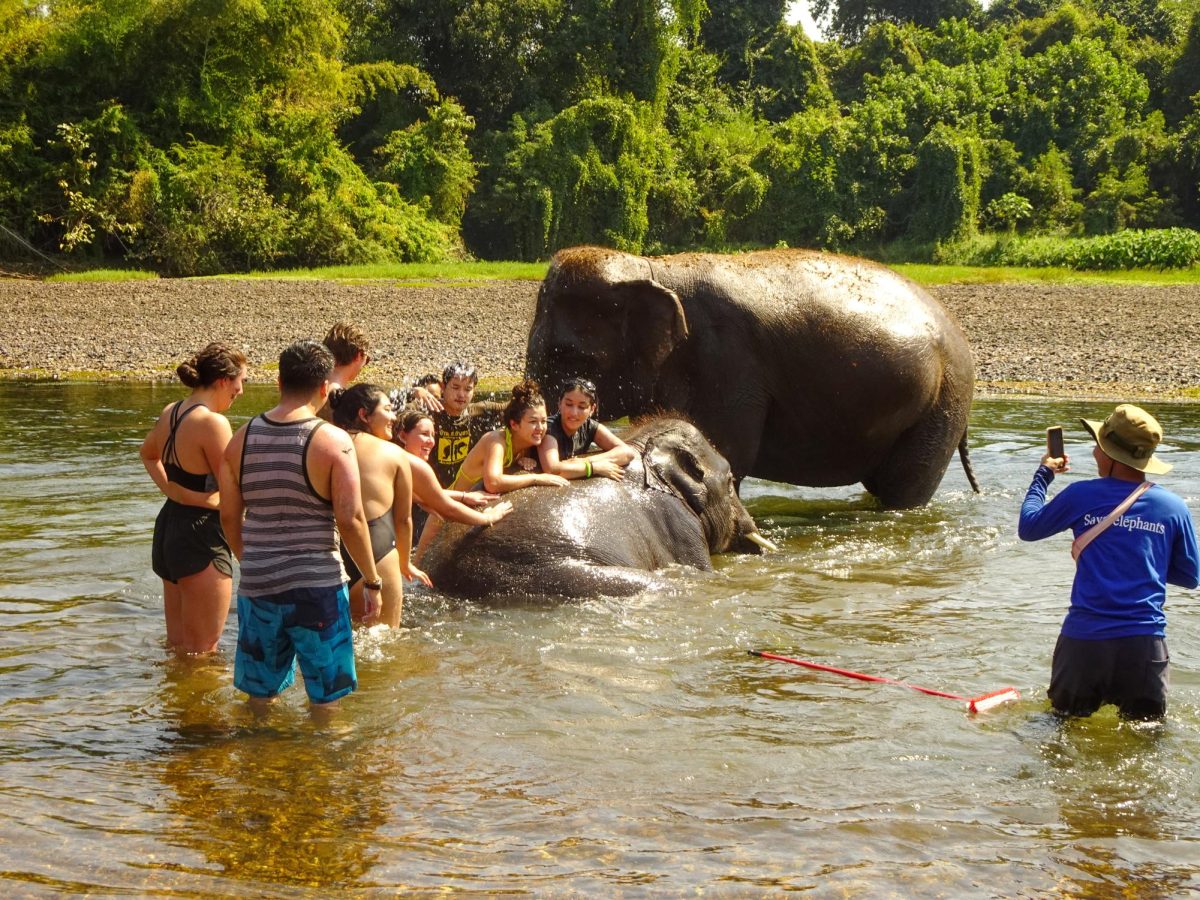
Remember the glory days of San Diego State men’s volleyball, when nationally ranked teams and All-Americans roamed Peterson Gym?
John Hyden, Mike Dodd and the National Championship team of 1973 could never have imagined the 4-17 record for the 1997 men’s volleyball team.
And nobody could have ever envisioned the Aztecs’ horrendous 1-13 conference record this season.
In fact, since finishing 11-9 in the Mountain Pacific Sports Federation in 1993, the Aztecs have gotten progressively worse every year.
Assistant coach and former Aztec player John Ross, who graduated in 1995, perhaps put the recent downslide best into perspective.
“I’m an Aztec from old,” he said. “I’m used to being No. 5 in the nation or higher every time we take the floor. There’s a winning tradition, and I don’t know if (current Aztecs) know about it.”
While the team is losing battles on the court, the root of SDSU’s problems comes from its troubles in the war off the court the recruiting war.
After years of thriving on the talented crop of high school volleyball players from the San Diego area, SDSU has recently seen many of the big-name, national powerhouse universities come in and steal away many of the local prep players.
Add to that the fact SDSU can’t afford to send volleyball coaches out to recruit nationally, and you might know the reason why so many schools have surpassed the Aztecs in the standings.
The first problem: Losing local players to bigger schools is most apparent within the Mountain Pacific Sports Federation itself.
Many of the conference teams the Aztecs play, including UC Irvine, USC and UCLA, have players who hail from the San Diego area. And these are some of the highest-ranked volleyball teams in the nation.
Unfortunately for SDSU, the problem doesn’t look like it will be getting better any time soon. Just last year, the Aztecs lost many local high school stars to other programs.
The problem with recruiting is a relatively new one for SDSU, and there are several reasons for it. First and foremost is the inability of the volleyball program to compete with nationally well-known schools.
Schools like Brigham Young University, Penn State and Ohio State shifted interest into men’s volleyball and have become some of the front-running programs in the nation. Those teams are currently ranked third, second and fifteenth in the nation, respectively.
With the influx of major programs on the national scene, a new trend has begun in men’s volleyball.
“A tremendous amount of parody has developed over the past few years,” USC assistant coach Aaron Smith said. “The good teams used to have their go-to guy, but this year it’s more wide open.
“There’s also a new recruiting hierarchy in college. The BYUs and the Stanfords are winning.”
Smith, who played volleyball at SDSU in 1994 and 1995, said SDSU has fallen further behind the other schools in the race to get high school stars than it should have.
“SDSU is in a rebuilding of sorts,” he said. “The good players graduated, and the Aztecs don’t get the big name guys anymore. SDSU is losing the recruiting race and it shouldn’t be happening.”
But the Aztec coaches aren’t taking the blame.
They say despite not having the resources to do what it takes to get some of the top high school players, they haven’t sat around and let other schools pass them by.
“Our budget for recruiting is minimal,” SDSU head coach Jack Henn said. “So we have to do whatever we can. Other schools can fly kids out for visits. We can’t.”
Assistant coach Jon McDonald, who makes many recruiting trips, said the lack of funding has made it harder to even get a look at many prep stars.
“There’s not even enough money to fly me up to Berkeley to scout a big high school tournament they have up there every year,” he said. “And that’s a big recruiting trip for us.”
Along with an increased inability to make recruiting trips, the program is also finding it more difficult to match what other schools offer for scholarships.
Currently, the SDSU men’s volleyball program has the minimum number of scholarships required for a program to maintain Division I standing (4).
“You have to sell your school to both a prospective athlete and his parents while recruiting,” Smith said. “And a big part of that is what kind of a scholarship you can offer a player.”
Henn said the lack of scholarship money limits the types of offers he can make to players.
“All I can do is look at a player, evaluate his skills, look at the scholarship money I have to offer, and make him my offer,” Henn said. “Then it’s his choice to decide what he wants to do.
“If he doesn’t want to go here because he doesn’t like me or he thinks SDSU is a second-rate school, that’s his choice,” he said.
The reason the program has seen its funds dwindle is because of the implementation of Title IX, the gender-equity initiative.
Title IX has forced schools to shift funding and scholarships more toward women’s athletics programs. It’s up to each school to decide how it allocates the scholarships available for men’s athletics.
At SDSU, a huge majority of men’s scholarships are set aside for football and basketball.
“There’s no question Title IX has had a negative effect on sports like men’s volleyball,” SDSU Athletic Director Rick Bay said. “We’re trying to enhance funding for the women’s programs to be in compliance with Title IX.
“Basketball and football get the most funding because they have the most potential to make the school money,” Bay said. “The same now goes for baseball because of the new stadium.”
With all the attention focused on the other programs, men’s volleyball has become the forgotten team.
“We’re not on a level playing field,” Henn said. “But I’ve been asked to accept this and I understand our budgetary constraints.”
With this open acceptance of failure will the volleyball team ever return to its once proud tradition?
Will there ever be another John Hyden or Chris Marlowe at SDSU again?
The way it looks now, probably not.






